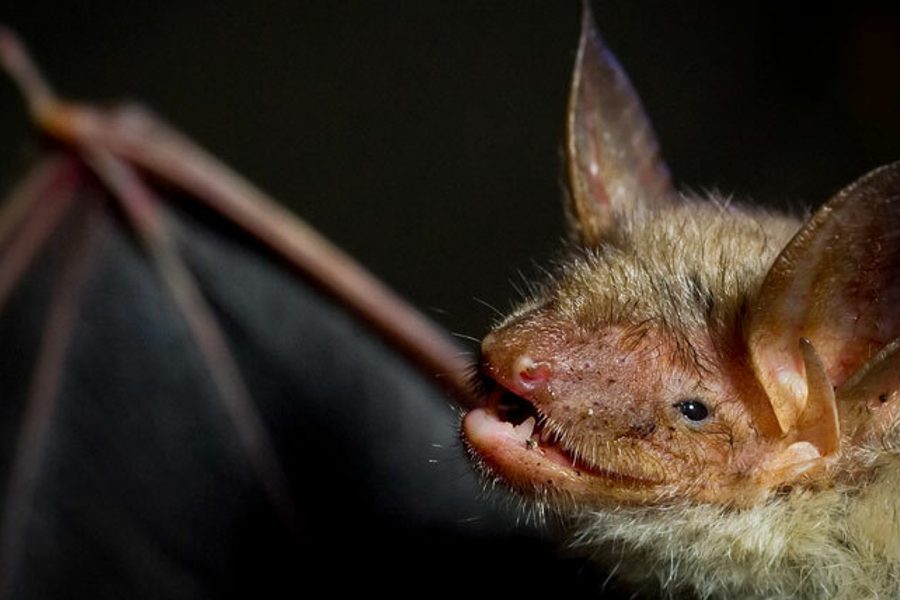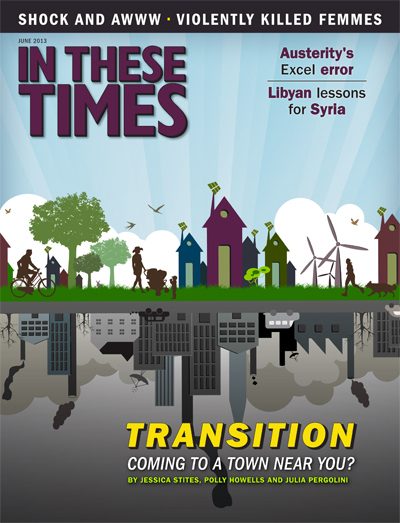
Approximately 45 miles southwest of Bangkok is one of Thailand’s most popular tourist spots: the much-photographed Damnoen Saduak floating market. Here, women paddling canoes ply their fresh flowers, fruits, vegetables, sweets and meats, cold drinks, quickly cooked snacks, hats, bags and various commemorative merchandise to a daily horde who arrive to take a brief boat ride through traffic-jammed canals. Along the sides of the canals are stalls selling more souvenirs. One of the most popular is a wood-and-glass-framed box containing a dead bat. Watching the tourists clutch their dead wildlife keepsakes under their arms as they pile back into their buses, I’m perplexed … and repulsed.
I ask a tourist from Australia, bat box in hand, if he thinks buying these souvenirs is a good thing. “We’re doing the locals a favor by helping them get rid of the bats. Just think of all the diseases they spread — rabies, malaria, cholera, TB,” he says. Another tourist chimes in, “They should be thanking us for buying these bat boxes.”
A cursory check on eBay brings more dead bats to light. Bats from Thailand, Indonesia and Vietnam are being killed, boxed and sold to the highest bidder. Obviously, boxes of dead bats are not just a Damnoen Saduak floating market souvenir.Bats, the only mammals capable of powered flight — masters of the night sky — have a bad reputation. Weighed down with sinister cultural baggage and often thought of as simply disease vectors — bats do host several dangerous viruses that humans can catch — it is often forgotten that bats provide indispensable services to ecosystems and economies.
According to Bat Conservation International, more than 300 plant species in the Old World tropics alone rely on the pollinating and seed dispersal services of bats, and additional bat-plant relationships are constantly being discovered. Many important crops depend on bats to pollinate their flowers or distribute their seeds, including mango, banana, avocado, dates, figs, cashews, peaches, guava and baobab. The notoriously odiferous durian and the petai bean, two of Asia’s favorite crops, require pollination by bats. Without bats there could be no mango chutney, no fig newtons, no date bread, no banana splits, no guacamole, no tequila.
Bats also disperse plant seeds essential for reforestation and timber production. Rainforests, the lungs of the Earth, rely on bats to pollinate flowers and disperse seeds for countless trees and shrubs. Studies done in the Neotropics have shown that bats were more responsible than birds for dropping seeds in the center of large openings in forests. Desert ecosystems also rely on nectar-feeding bats. Organ pipe and saguaro cacti owe their very existence to bats. According to bat biologist Bill Rainey, on islands with few wildlife species, fruit bats play a “keystone” role in forest maintenance as the sole pollinators and seed dispersers of local plants.
In some cave systems, bat guano or droppings are a major source of nutriments for fish, salamanders, frogs and other animals, according to the U.S. Fish and Wildlife Service. And, bat guano — one of the world’s best fertilizers—is a critical resource, both commercially and for subsistence farming, in much of the developing world. Unfortunately, as in all harvesting of resources, over-exploitation can occur and in some areas irresponsible guano harvesting has resulted in the loss of millions of bats and the extirpation of many local colonies.
Because bats are the slowest reproducing mammals on earth for their size, most producing only one young annually, they are exceptionally vulnerable to extinction — and not just in the tropics. According to Rob Mies, the executive director of the Organization for Bat Conservation, “Most bat species in the world are in decline. We estimate that about half of the over 1,200 known bats are at risk of extinction in the next 100 years.” A decline in bat populations could seriously threaten the health and livelihood of people. Far more than the public understands, we depend on bats to help keep crop pests and mosquitoes in check. Insectivorous bats help control pests and reduce the need for harmful pesticides. Research published in the journal Science concludes that bats save U.S. farmers more than $3.7 billion a year (possibly as much as $53 billion a year) in avoided crop damage and reduced pesticide needs. A single brown bat can catch 1,200 mosquito-sized insects in just one hour. In Missouri alone, gray bats eat 540 tons of insects per year, while the 20 million Mexican free-tails from Bracken Cave, Texas eat approximately 200 tons of insects nightly. The bats that live in Khao Chong Pran cave in Thailand consume close to 20 tons of insects each night. Far from being spreaders of malaria, as the Australian tourist in Bangkok told me, bats eat the mosquitoes that could otherwise infect humans with this and other diseases.
Do bats need us?
Merlin Tuttle, a leading bat expert and founder of Bat Conservation International, says, “[Bat] populations are needlessly declining, often the result of thoughtless human acts. We cannot ignore their plight without jeopardizing our own future.” Alice Hughes, who studies the conservation and biogeography of Southeast Asian bats, agrees: “Bat species worldwide are endangered by a variety of different threats, ranging from hunting, habitat and roost loss, pollution, pesticides, persecution, climate change and disease.”
In eastern North America, white nose syndrome, a fungal disease, has killed at least 6 million bats since 2006 and is now moving west threatening the existence of all North American bat species that hibernate. The cause of this malady, which does not affect humans, is thought to be a fungus found in caves in Europe that was introduced to North America by European spelunkers.
And sometimes the dangers to bats come from unexpected sources. Tens of thousands of bats are killed each year by barotrauma, a condition caused by sudden changes in air pressure, related to wind-energy turbines.
According to Hughes, “On a worldwide basis, our lack of knowledge or even the identity of some bat species often makes targeting conservation measures and assessing population trends difficult or even impossible.” And Nikky Thomas, the scientific officer at the Harrison Institute, points out that while “new species of bats are still being discovered and as such the total number of known species is increasing, unfortunately the number of individuals in some populations are declining — especially in areas where conservation measures are hard to implement.”
By purchasing bat boxes, tourists are not just encouraging the trade in wildlife, but are also doing their part, albeit a small one, in generating ecosystem imbalance. The taxidermy is emblematic of environmental decline.
Tourism, however, is a double-edged sword.
Responsible tourism can also benefit bat conservation. Kate Jones, chair of the Bat Conservation Trust, recognizes that bat tourism, if handled correctly, has the potential to conserve bat populations while also providing benefits to local communities. One of the best examples can be found at the Congress Avenue Bridge in Austin, Texas, which is home to a 1.5 million-strong Mexican free-tailed bat colony that generates $10 million in tourism revenue from more than 100,000 visitors every year.
We need bats to survive, but will the masters of the night sky survive the impact of recent human development and destruction? Or, will the soft fluttering of fragile wings no longer be heard, the nightly departure of furry hordes no longer seen? For 64 million years, bats have inhabited our planet. How much longer do they have here?
And if they go, can we survive?







